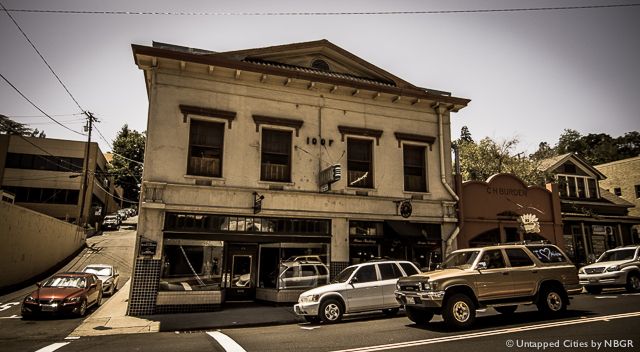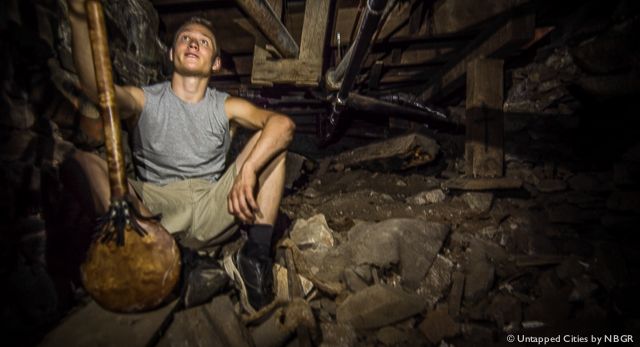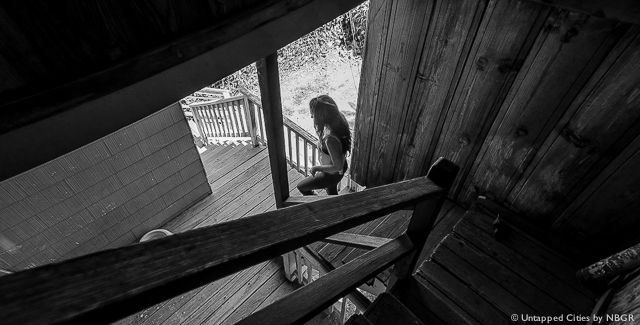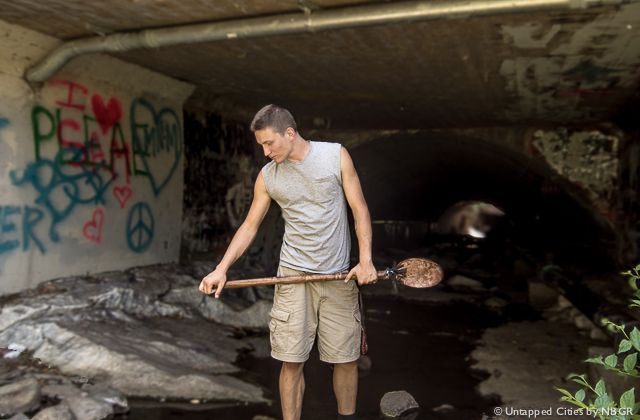Last-Minute NYC Holiday Gift Guide 🎁
We’ve created a holiday gift guide with presents for the intrepid New Yorker that should arrive just in time—



At the foot of the Sierra Nevada in the environs of Yosemite National Park rests the small city of Sonora, California, although “perch” might be a better verb. A former gold rush pioneering town, the seat of Tuolumne (“to-all-o’-ME”) County has shed its former urban skin and rebuilt atop of itself over time. The unofficial tour guide of this hodgepodge community of war veterans, college kids, and good American plain folk who live a precarious existence in the vicinity of sinkholes that can (and do) open up is a man by the name of Lon Locey. Accompanied by his acoustic guitar, his near encyclopedic knowledge, and sometimes a giant club, Locey offered a unique look into this quiet city’s past in order to better prepare it for the future.

Sonora’s claim to fame as a gold rush town revolves around its extensive network of mines and shafts, which permeate the earth beneath in an area vaster than the current city. Many of the buildings that stand on Washington Street today have been constructed on pylons, or support structures. These in turn rest on a bed of tailings. Commonly associated with mining, tailings are, “little rocks that range in size from your head all the way down to your eyeball. Get enough of them, pack them down a couple hundred feet, and you can develop on them,” explains Locey. The city and its residents have done exactly that for a century, a practice being sustained because, oddly enough, it helps prevent transferring the vibrations from earthquakes.

Nevertheless, the mining industry and its dredging practices have done much more to shape the area’s biomass, and if you happen upon Locey strolling through Sonora’s historic core, you might just get an impromptu expedition into the city’s moulted skin. In the basement of a bookstore, for instance, a double-boiler from the 19th century rests at the entrance of an old mine shaft. Emphasizing the city’s history as a Wild West town, Locey explains that store owners would utilize the mine shafts, not to find treasures, but to bury them from the volatile locals during skirmishes. Why the owners chose to build on a boiler and a mine shaft in the first place was a matter of convenience, proximity to the gold trades, and for the simple fact that the boilers were too cumbersome to move. And so they built around and up.

But for every deposit of gold dredged for, an entire acre of trees were cut down. The timber industry quickly outpaced gold in the local economy and has since retained its clout in city politics and revenue source. Shafts, as a result, have either suffered from negligence and flooding or have been boarded up by the city, and for good reason. Many of them are located beneath bridges and in tunnels that span the city’s network of inconspicuous creeks, and have been etched into the physical environment. Homeless people have long inhabited the entrances to shafts, and dozens of people have died down in them as a result of either getting trapped or asphyxiation. The deeper one gets, the hotter, denser, and less breathable the air becomes.

The threat of volcanic activity is just about as infrequent as any major sinkhole opening, and many residents notoriously remain complacent to their condition until catastrophe strikes. Droughts, which command a much larger portion of public consciousness, influence daily life more immediately. “Locals have been conserving as best they can and have been doing an amazing job, thus far,” comments Locey. For every drought that strikes Northern California, there has been one affecting Southern California three times as long, often causing much of the water to be diverted. As a result, forest fires have become an all too foreboding reality. “Until last summer I had never seen a 600-foot tornado of smoke. That’s from people not allowing forest fires to burn naturally…Things come to a head, what with no rain or anything.” A present solution has been to literally fight fire with fire by creating smaller brush fires that suck up the larger one’s resources. Locey laments that this practice, though limiting the scope of the fires, only creates deep layers of intensely hot biomass that feed this process into an endless cycle.

Having shifted to tourism, the past has never played a more critical and present role in the city’s image. Historical identity is inextricably linked to the biosphere in Sonora, and conservationists like Locey are wary of revealing too many secrets. “I would like to keep some of the hidden stories here hidden, because although we do benefit from tourists, we don’t want too many of them,” he says. At that, he rattles off a seemingly endless list of caves, climbing trails, and other hidden spots, including The Labyrinth, a marble rock formation etched in pockmarks from hydro-mining that is as aesthetically alluring as it is dangerous. Several miles long, most people only ever make it a fraction of the way before injuring themselves, getting lost, or simply turning around.

“If you’re coming out here to appreciate nature, then leave it the way it is…bring no mark, leave no mark. If you have that disposition…and you find me…I will bring you to all these places,” proclaims Locey. That’s a pretty good deal, if a little misleading; Locey has a way of finding you.

Read more about what’s hidden in your city here. To see more photos from Sonora, visit thisisnotreale.com.
Subscribe to our newsletter